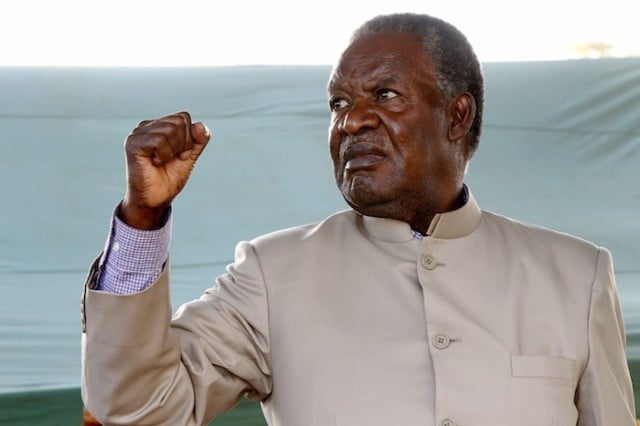After months of speculation over the health of Zambian President Michael Sata, the government announced that Sata died in London on October 28 at the age of 77. With his death comes political uncertainty but also signs that Zambia will weather this storm with its democratic track record intact.
Sata’s death was both sudden and unsurprising. Speculation over his bad health has plagued Zambian politics over the past year as his public appearances became rare. Rumors of his death circulated several times over the summer, including twice in one week in September after Sata travelled to New York but failed to address the UN General Assembly as scheduled. Despite repeated assurances by the government that all was well, Sata choosing to miss the 50th anniversary of Zambian independence last week for a medical check-up in London gave a good indication that his time was likely running out. Nonetheless, while not surprising his death still leaves a significant gap and uncertainty for Zambia.
Although Sata was not elected to the presidency until 2011, he was a long time figure in government. Known as “King Cobra” for his ruthlessness against his opponents, his antics inspired party loyalty but also controversy, particularly with foreign investors. When elected Sata chose the more moderate Guy Scott as his vice president, largely to placate Chinese resource investors whom much of the economy relies on. His short time in power did see the country undergo impressive economic growth, albeit largely based on the expansion of the copper industry as prices increased. Now that copper prices are decreasing, there are serious questions as to how Zambia can sustain the 7% growth rate it has enjoyed without further economic reforms.
The economy is not the only thing left in the balance after Sata’s presidency. Zambia has long enjoyed a reputation as a successful liberal democracy even though civil society and the media occasionally found themselves under threat. Sata’s election brought hopes that this could change, but instead the space available for dissent consistently shrank throughout his rule. New laws on media regulation were used to target media outlets and journalists critical of the government, earning Zambia the label of “Not Free” in Freedom House’s 2014 Freedom of the Press Index. Civil society was also targeted under Sata, and political infighting saw an increase in violent political attacks both within Sata’s Patriotic Front and with opposition parties.
With this backdrop, Zambia now looks to what the future may hold. Under the constitution, the country must hold elections within 90 days to choose a new president. As vice president, Scott now serves as Interim President until that election but is (most likely) unable to run for the presidency himself since his parents were foreign-born. There is no clear successor within the Patriotic Front, but opposition parties are also not as organized as they perhaps should be given the long history of Sata’s poor health. With no clear prediction as to who will be president in three months’ time, the uncertainty is giving foreign investors pause, which could cause additional problems for Zambia’s next leader.
Yet despite the uncertainty of what direction Zambia may be heading in, there is a type of success story buried in the political process. As many international media outlets have noted, Scott is a White Zambian and his succession as Interim President marks the first White head of state in Africa since the end of apartheid in South Africa and the first White head of state to come to power through democratic elections in a majority rule state. The fact that Scott is White does not change the calculus discussed above; after all as Elias Munshya pointed out yesterday on Twitter, Scott’s succession is not a reversion to “White Rule” – as some Western media outlets phrased it – but rather a continuation of Zambian rule as laid out under the constitution. But the lack of major controversy over his race and role as Vice President and now Interim President does present a radically different narrative than the one both Western and African audiences have become used to, the narrative more exemplified by ongoing struggle and hostility between post-colonial Black governments and White minorities in nearby South Africa and Zimbabwe.
That Zambians are more focused on obeying the constitution and addressing the economic and political issues that face the country is a good sign that despite uncertainty caused by the death of a sitting president, Zambia is on a good path. There are many critical issues ahead, including the snap elections that must be held by January and the ongoing attempts to ratify a new constitution, but even under difficult circumstances, Zambia is upholding its democratic reputation. That is welcomed news in a region where democracy has faced a consistent backslide and is in need of examples of change.
